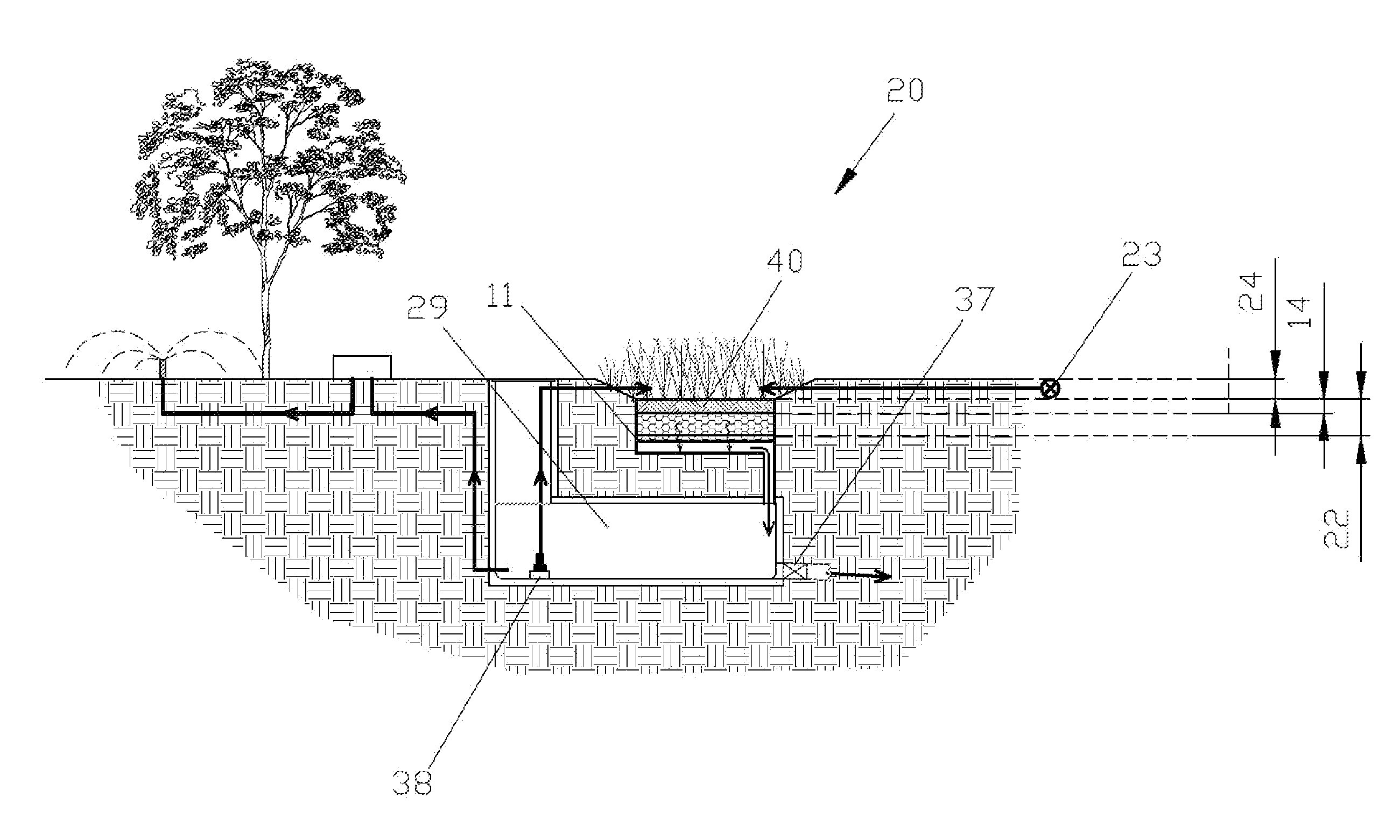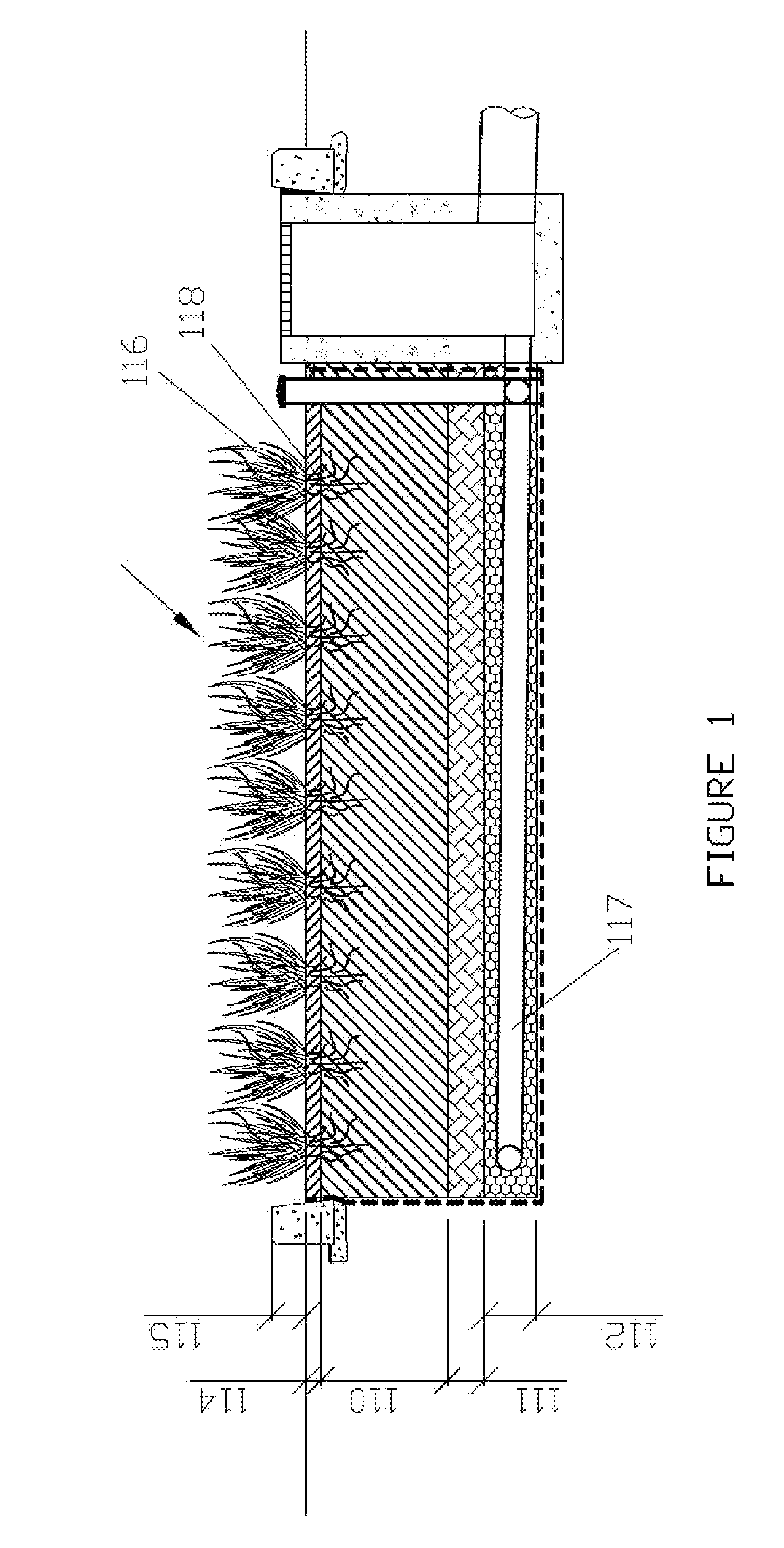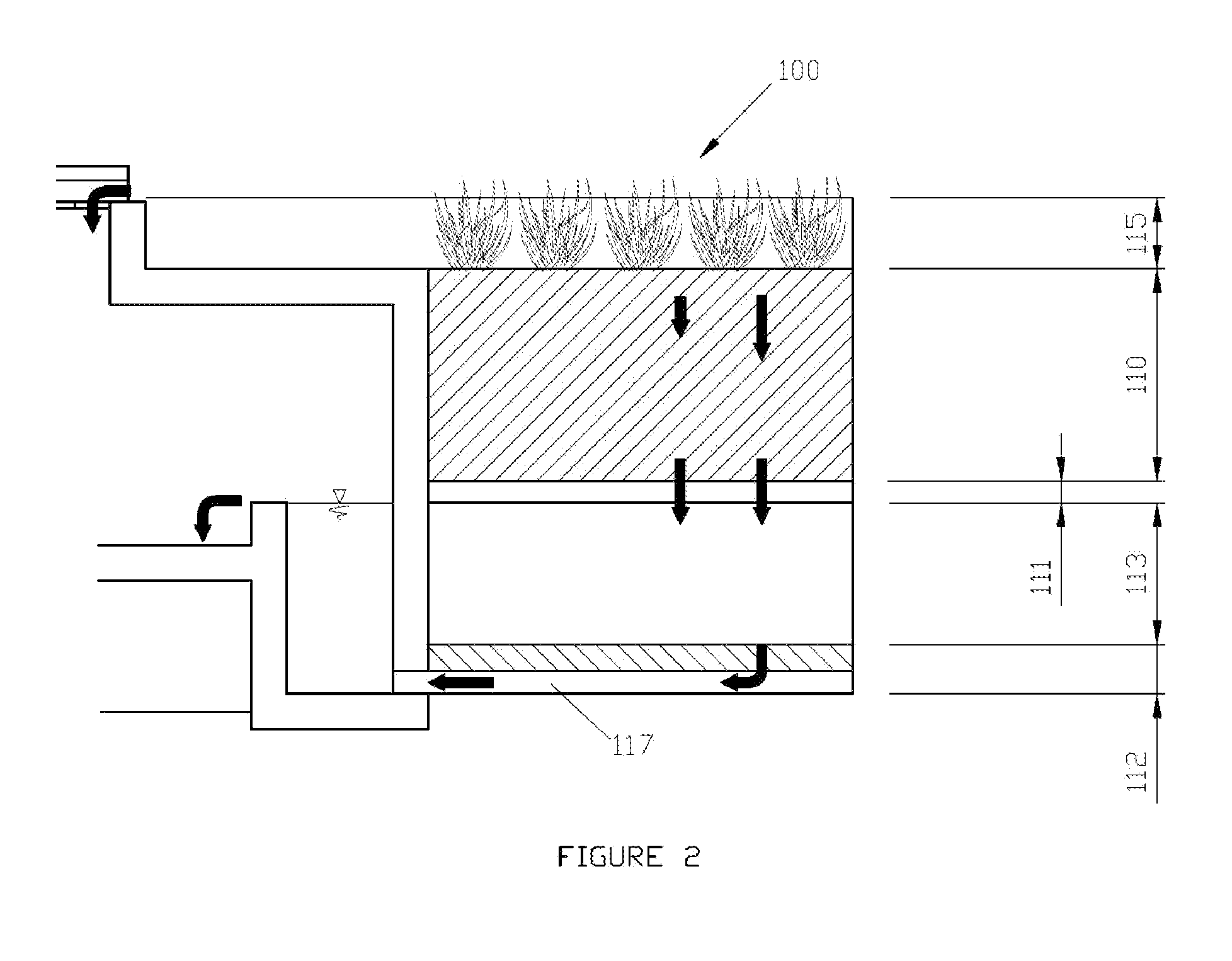Bioretention module, method and system for treating water
a bioretention module and water technology, applied in the field of water treatment, can solve the problems of blue-green algae outbreak, dramatic consequences for marine ecosystems, and ineffective removal of pollutants
- Summary
- Abstract
- Description
- Claims
- Application Information
AI Technical Summary
Benefits of technology
Problems solved by technology
Method used
Image
Examples
Embodiment Construction
[0056]Embodiments of the bioretention module, system and method of the present invention will now be described with reference to the accompanying drawings.
[0057]Bioretention systems can be used in many different applications where water treatment is needed. This could include local government, council, commercial or even domestic applications. Dirty and / or contaminated water can be treated naturally through a bioretention process which utilises biological removal of contaminants from the water. Contaminants are taken out of the water and converted in the plants to less harmful substances and / or retained in the filtration medium. In an effective system, water that passes through the filtration medium has been treated and has had a significant proportion of contaminants removed.
[0058]In prior art bioretention systems, such as the rain gardens shown in FIG. 1 or 2, plants 116 are planted haphazardly in soil and are expected to treat water in an effective and efficient manner. However, ...
PUM
| Property | Measurement | Unit |
|---|---|---|
| area | aaaaa | aaaaa |
| soluble | aaaaa | aaaaa |
| adsorption | aaaaa | aaaaa |
Abstract
Description
Claims
Application Information
 Login to View More
Login to View More - R&D
- Intellectual Property
- Life Sciences
- Materials
- Tech Scout
- Unparalleled Data Quality
- Higher Quality Content
- 60% Fewer Hallucinations
Browse by: Latest US Patents, China's latest patents, Technical Efficacy Thesaurus, Application Domain, Technology Topic, Popular Technical Reports.
© 2025 PatSnap. All rights reserved.Legal|Privacy policy|Modern Slavery Act Transparency Statement|Sitemap|About US| Contact US: help@patsnap.com



